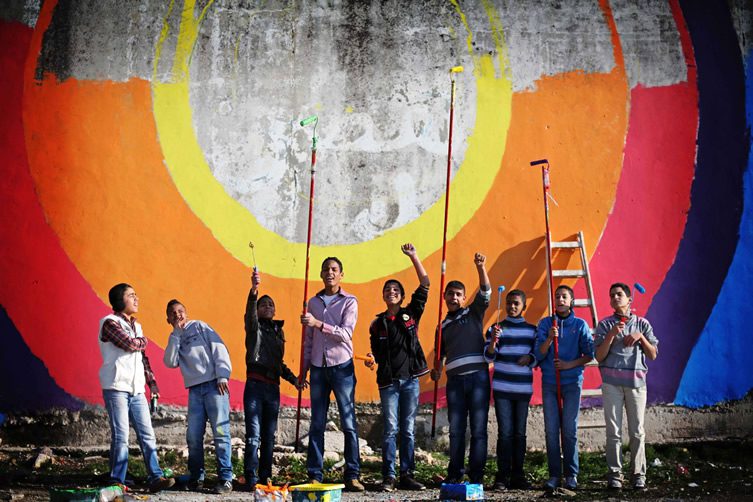Welcome to Zaatari, the fifth-largest ‘city’ in Jordan, and the not-so-temporary home of 130,000 Syrian refugees. On an uneven dirt road sits a pockmarked shop, almost identical to the thousands of other breezeblock buildings in this bleak 3.3 square-kilometre settlement – apart from the vast cartoonish mural daubed on its side. It’s almost Disneyish, a painting of two white houses shaking hands, their window eyes wide and their cyan and tangerine roofs bright against the concrete canvas. A banner of looping Arabic script reads ‘My house is your house’, its sentiment at odds with local Jordanian-Syrian tension. People stop and stare: how did this big, bold painting end up here?
It was the kids that did it. Oh – and award-winning Spanish graffiti artist Ruben Sanchez. This is the work of AptART, a not-for-profit NGO which aims to raise awareness of issues affecting the lives of displaced children, and engage with them through art. AptART brought Madrid-born Sanchez to Jordan in January 2014, as part of a four-month project to improve the environment and prospects of thousands of Jordanian and Syrian children, and get them working together. It was an easy decision for Sanchez: “Just the idea of adding colour and getting the local and Syrian kids involved was driving me crazy, so I said Yes.” So far, they’ve held art workshops and painted murals with the children on the bleakest of buildings – and been joined by a band of other international artists, including Herakut (Germany), Luc van der Walt (South Africa), Jonathan Darby (UK) and Samantha Robinson (USA).
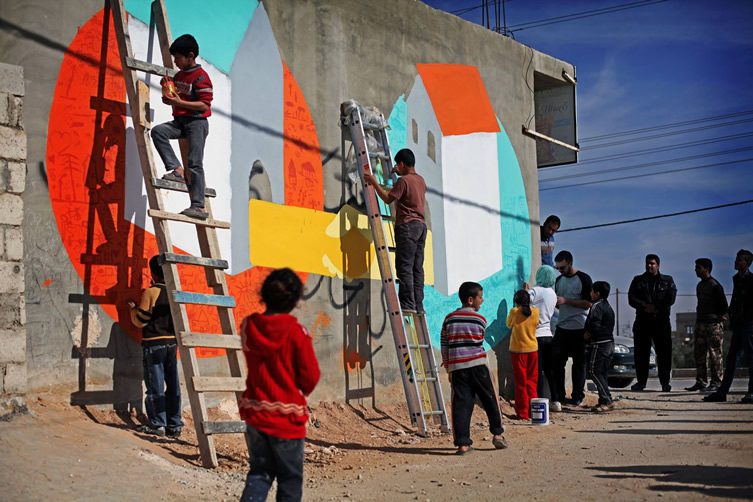
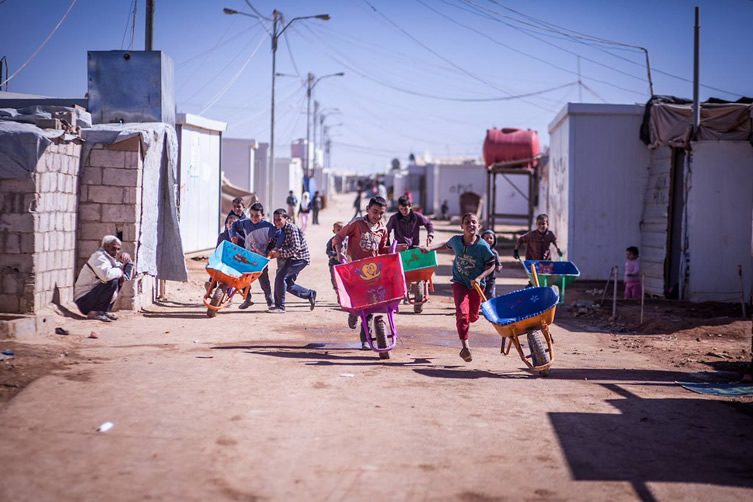
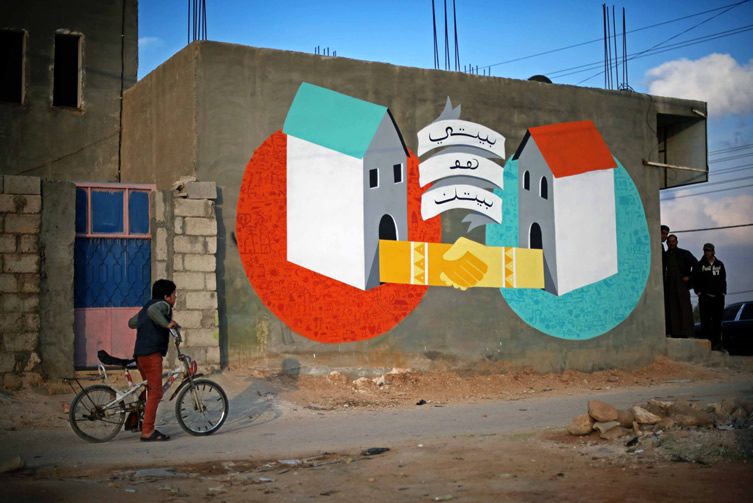
Mi Casa Es Tu Casa: Using some Spanish flair and the idiom “my house is your house” Ruben Sanchez and the team taught children about respect, hospitality and sharing.
Unrest runs deep in the area, and working with the children hasn’t always been easy. “You never know what can happen,” admits Sanchez; “You see fights starting in a second and stones can fly around very easily.” But two months into the project, AptART’s perseverance (and experience – they’ve also worked with communities in DRC and Mozambique) appears to be working: “You can see that [the kids] are having a good time being part of a big collective artwork,” says Sanchez. “While they learn the technique, they joke with their friends, either Jordanian or Syrian. Nothing can beat it.”
To create the background of the ‘My house is your house’ mural, Sanchez asked his mini accomplices to paint pictures of what their real homes meant to them. Look closely, and you’ll spy hundreds of tiny hearts, flowers, and smiling cats and dogs – innocent doodles, typical of children all over the world. Among the concrete slabs that make up this sprawling, rough-edged refuge, it’s a reminder of life before Zaatari – and the importance of peace, no matter what nationality you are. One mural might not change the world, but sometimes a lick of paint can work wonders.
***
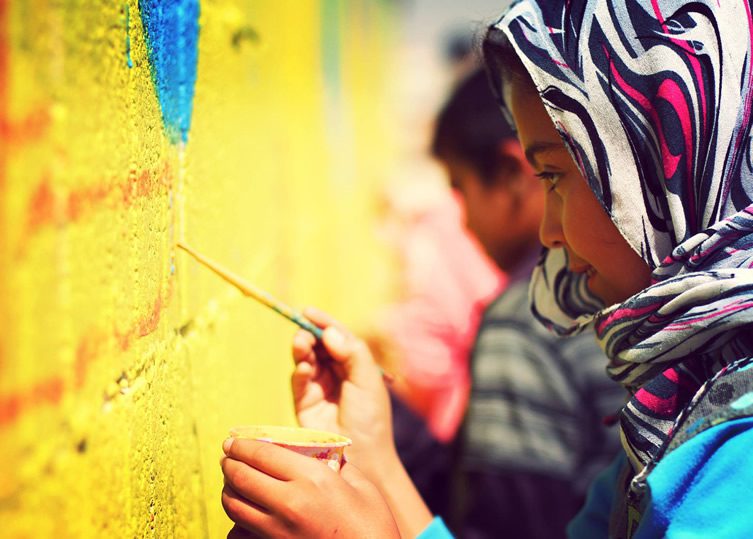
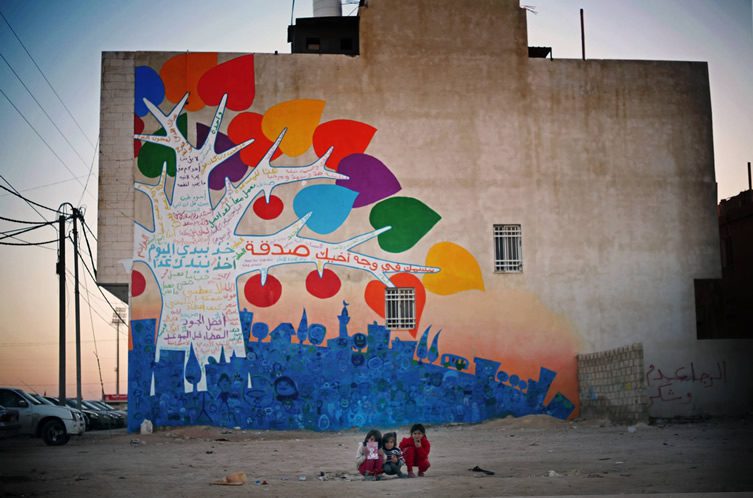
Community Tree: Jordanians and Syrians of all ages gathered together to paint this massive tree. The foundation is filled with portraits the children painted of all people who make up their community, including bread bakers, car mechanics, teachers and their mothers and fathers.
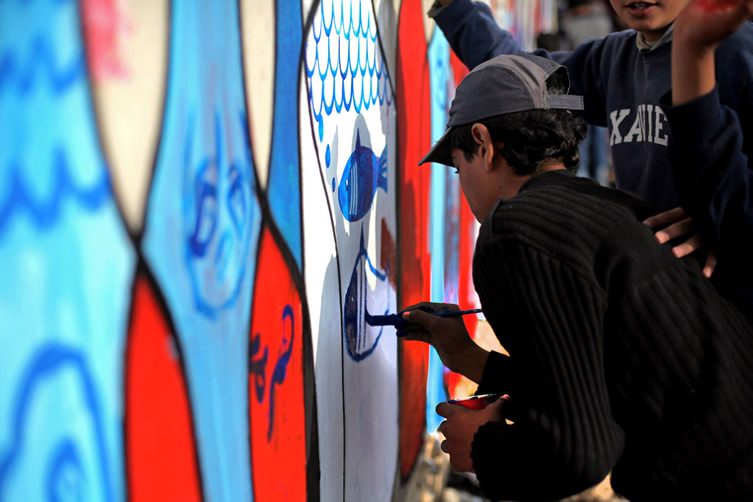
Getting things underway in Mafraq, Jordan with workshops on water conservation and shared resources.
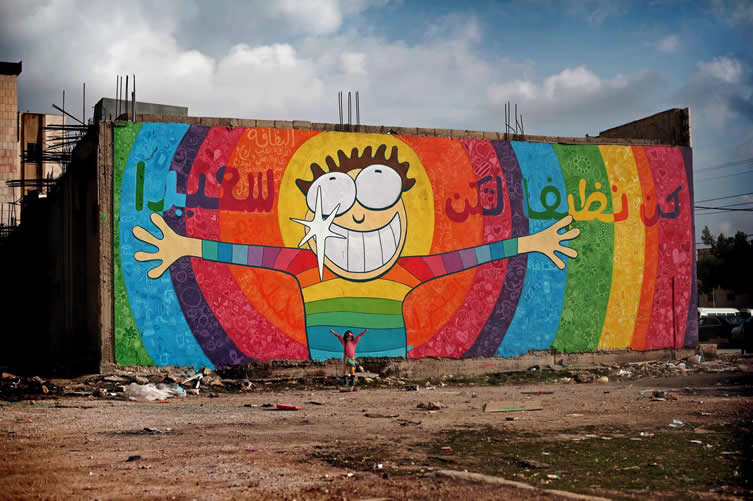
Luc van der Walt and the team finishing up the latest hygiene promotion mural in Irbid. Each ring of this colourful portal is filled with messages and drawing about a clean and happy life.
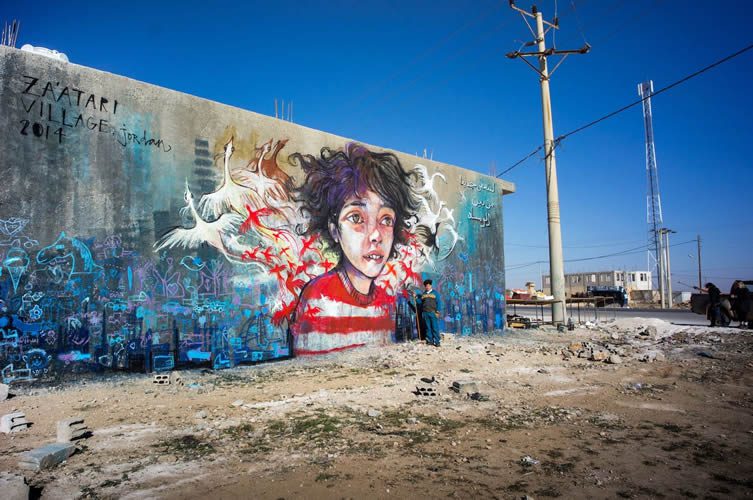
Syrian families forced to leave their homes often speak about dislocation and despair. To give these families a message of hope, artists HERAKUT first covered a wall in dark colors representing hopelessness. They then lead a discussion with Jordanian and Syrian children about things that make them feel optimistic.
